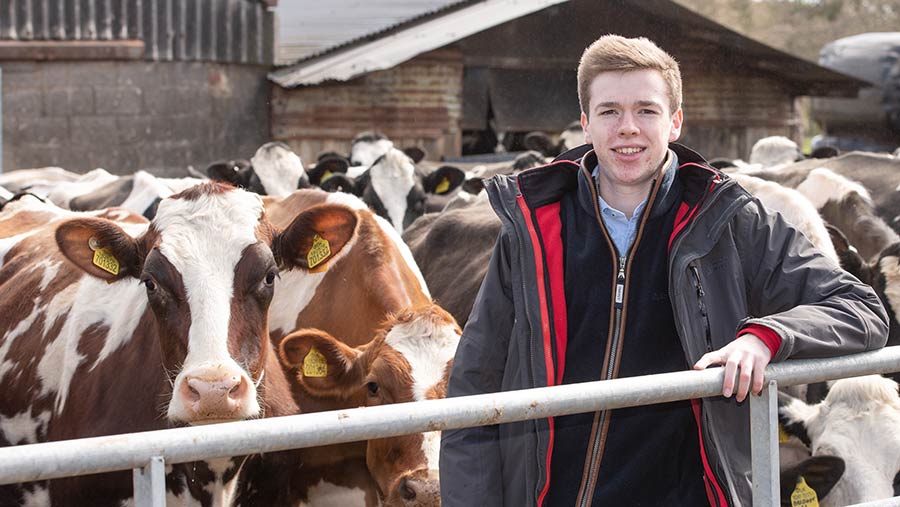Opinion: It’s time to change the UK’s beef grading system
 Josh Dowbiggin, a former FW Ag Student of the Year, was part of the campaign in 2018 © John Eveson
Josh Dowbiggin, a former FW Ag Student of the Year, was part of the campaign in 2018 © John Eveson With less than a year to go until the UK officially leaves the EU, the British beef industry appears to be in a great place to take full advantage of this monumental shift from normality.
The UK is currently only 80% self-sufficient in beef – so this, combined with the new ability to make our own trade deals with countries around the world, gives the UK beef sector huge potential to significantly grow its markets both at home and abroad.
Our standards of animal welfare, traceability and environmental protection are unbeatable across the globe, so this will no doubt help us to develop a credible customer base globally.
See also: Read more of Josh Dowbiggin’s columns
However, can we guarantee the same high standards for eating quality as we can for production methods?
We already know that we have great standards behind our product, but how can we expect to be a strong player in the beef market globally if the actual product itself does not always have the consistent eating quality that we like to claim?
The UK currently uses the same and arguably old-school classification system that it has for the past 40 years and although there is no doubt that the Europ grid system was once fit for purpose, it now appears to be hindering us rather than helping us.
Grading tweaks
Domestic beef consumption is currently falling at around 4% annually and, although there are several reasons for this, I believe the biggest factor is inconsistency of product.
If you watch consumers make their way down the meat aisle of a supermarket, it takes them considerably longer to choose a steak than it does to choose a pack of chicken breasts, and this is because of the variability in the steaks on the shelf.
There is also an inconsistency in consumers’ understanding of what makes a great-tasting, tender and juicy steak. For example, some actively look for a well-marbled steak, while others actively avoid marbling in an attempt to avoid fat.
Apparently it takes up to three months for a consumer to purchase beef again after a bad eating experience.
To maintain its reputation as the best protein on the market, the beef industry must ensure that every pack of beef on the supermarket shelf or butcher’s counter gives a quality eating experience every single time (or at least an indication of expected eating quality on the packet).
To achieve this, I believe it is time for our grading system to have a quality grade element, similar to the systems used in the US, Canada and Australia.
By adding measurements known to be signs of eating quality to our grading system, such as marbling, we can incentivise the beef industry to produce animals that are guaranteed to have better tasting meat.
Great steak
If we could create a quality grade element that a consumer would recognise, similar to the system used in the US, we can both regain the trust of the consumer and teach them about what makes a great tasting steak.
There is no doubt that the grading system must retain a yield grade element to it in order to keep the industry efficient, and if the grading system still works on a pence per kilo basis this will still be the case.
But it’s time to recognise that premium cuts make up a large part of the carcass value of a beef animal and as a result, it’s now more important than ever to guarantee consistent eating quality for the consumer.
Yes, maturation and cooking technique can also help to make a great eating experience with beef, but you can’t make good beef from a bad animal, so changing the current system is a vital next step.
Lancashire lad Josh Dowbiggin, 21, is in his final year of studying agriculture at Harper Adams University. He runs a small flock of Easy Care ewes alongside his Ghyll Beck Hereford Stud business, importing and marketing Hereford semen and embryos from around the world.
